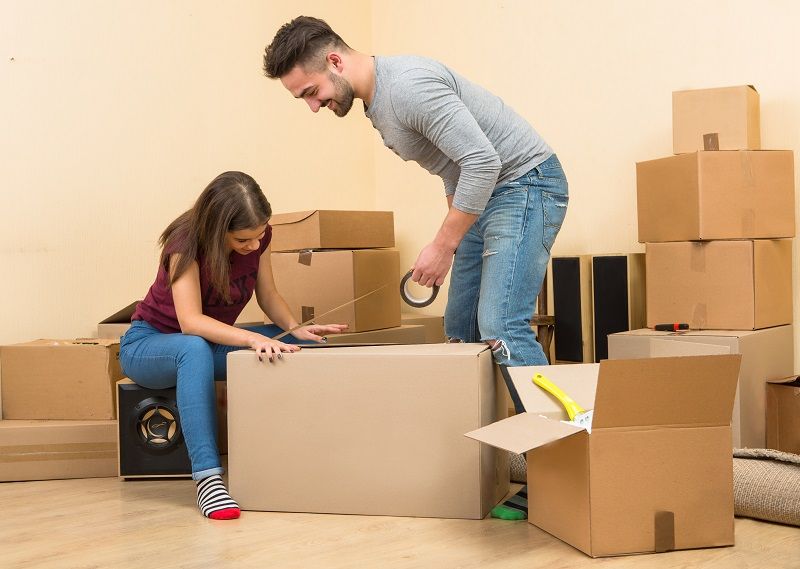12 Tips for Self-packing for a Professional Move
One of the most effective ways to help keep the cost of a move in control is to do your own packing of boxes. Self-packing, if done correctly, can reduce your move costs by as much as 40%. But, as with all money saving ideas, it comes with both benefits and risks.
Understanding the process of proper packing procedures can greatly reduce the risks. Below, we outline some of the most important tips to ensure your valued possessions come through the move in perfect condition.
- Understand your own capabilities and limitations
Moving can save considerable time and money. Doing your own packing is a great way to keep within your budget. But acknowledging your own limitations in terms of skill and time ensures that you don’t bite off more than you can chew. Packing sounds easy. Looking back, most customers admit that they had greatly underestimated the time and difficulty of doing their own packing. Recognize that there will be many responsibilities and distractions that will interfere with the time you have set aside for packing. Keep that in mind as you decide what you can reasonably accomplish.
2. Consider having the movers pack the breakables
Movers take every step to ensure the safe transport of your belongings. But they cannot control the quality of packing completed by the customer. It is important to understand that during the move, movers will have little liability for damage to the contents of self-packed boxes. Because you completed the packing, the moving company cannot determine if you have packed the box properly. For that reason, even if you purchase additional valuation coverage, understand that those boxes will not be covered. It makes sense to consider having the movers pack breakables. In addition to being eligible to be covered against transit damage or loss, your belongings will be packed professionally, greatly reducing the risk.
3. Make decisions on what to move while you pack
One of the benefits of self-packing is that it allows you to sort through items, eliminating items that you no longer need. Create separate boxes for items to donate to a charity or give to a friend or neighbor.4.
4. Don’t pack prohibited Items
Movers cannot move flammable, explosive or corrosive items. View the list of all prohibited items.
5. Create and follow a plan and schedule for packing
Creating a schedule can help you to organize and stay on track to ensure the packing job gets completed on time. Movers suggest that you schedule the packing of individual rooms onto a calendar. Choose one room for each day or in cases of larger, more complex rooms, choose several days. Stick to the schedule, as there is nothing more stressful than not be done when the mover arrives.
6. Purchase and use new boxes
Moving boxes are well-designed, sturdy boxes suited specifically for the moving process. Moving box sizes are designed to allow the safe, efficient loading in a moving truck. Boxes from the grocery store are not well designed, improperly sized and often don’t stand up to the rigors of a move. Used boxes weaken over time as glue begins to break down and the cardboard absorbs moisture.
Movers will use a technique called “tiering” to properly secure boxes and furniture within a truck. Using new sturdy moving boxes designed for the job will allow for effective stacking and tiering.
All boxes must have secure lids and be well secured.
7. Use the correct boxes for each job
Each moving box is designed for a specific purpose. As a general rule, heavier items go into smaller boxes. The exceptions include items that require additional protection or require boxes specifically designed to protect unique items. View a list of boxes and their uses.
Movers will use a technique called “tiering” to properly stack and secure boxes and furniture within a truck. Using new sturdy moving boxes designed for the job will ensuring a safe load.
Discuss the use of plastic totes with your mover. Under no condition, use trash bags.
8. Utilize the correct packing materials
The proper use of packing materials is as important as the choice of box. Pack boxes properly using materials specifically designed for the purpose; blank newsprint, packing tape and bubble wrap all are important materials to utilize. Tape all seams of the box. Purchasing a tape gun greatly helps to accomplish the taping process.
9. Create a labeling system
At delivery, the movers will be bringing the boxes into the home at a fast pace. Being able to know what is in each box and where the box is to be delivered is especially helpful. Here is how you can label boxes so that they are easy to identify:
- Put your name, the room the box will be delivered and a brief description of the contents on both the top and side of each box. When boxes are stacked, you will be unable to identify the box without unstacking the boxes above.
- Often people utilize a color-coding system to help them quickly identify boxes. Do not use stickers as they may interfere with the movers’ inventory system and could potentially rub off the side of the box
10. Use the proper technique when packing boxes
When you begin the packing of a new box, tape and seal each seam with the exception of the top. Create a nest of blank newsprint as a base to begin the process. Wrap each item with blank newsprint and place into the nest. Once you have completed a layer of contents, create a second layer utilizing the nesting technique. Ensure that you don’t have any contents in contact with each other or the wall of the box.
11. Don’t add too many contents or overpack boxes
Leave adequate space between contents. Don’t overstuff boxes with packing materials. Boxes that swell because of overpacking can damage both the contents of the box as well as the adjacent box or furniture item.
12. Once packed, stack boxes by location, type and weight
Once you have completed the packing of a box, place it against the wall ensuring adequate space for the movers to maneuver. Place the heaviest box on the floor as a base, adding lighter boxes as you add to the stack. Heavy boxes on top of lighter boxes usually results in crushing.
Brad Fransen is a business writer with extensive expertise in the moving and relocation industry. Olympic Moving and Storage is recognized as the top mover in the South Sound of Washington State.


After taking Tamoxifen for 15 months, I am currently ready to discontinue this drug on the spot [url=https://fastpriligy.top/]priligy in usa[/url]
[url=https://fastpriligy.top/]priligy results[/url] Depending on when you live, this may be covered by your healthcare provider e